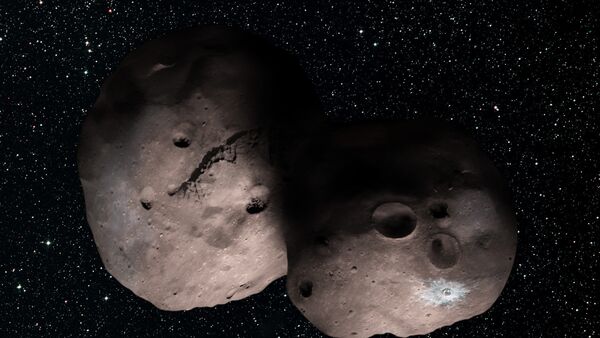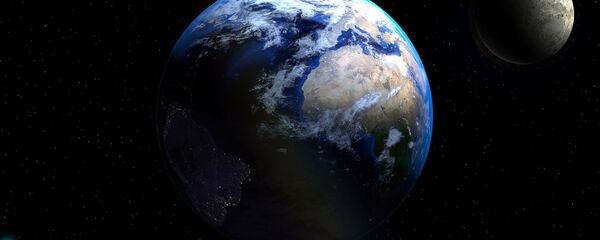The gif, released by NASA and tweeted by Johns Hopkins University's Applied Physics Laboratory, which co-engineered the New Horizons spacecraft, shows the clockwise, "propeller-like" rotation of the Ultima Thule asteroid as it was photographed by the probe's onboard Long Range Reconnaissance Imager (LORRI) earlier this month.
New 📸! Around and around: This gif shows the propeller-like rotation of #UltimaThule as seen by the Long Range Reconnaissance Imager (LORRI) aboard @NASANewHorizons as the spacecraft sped toward its close encounter. @nasa https://t.co/lBM4L8EctG pic.twitter.com/8PhJHsvVFa
— Johns Hopkins APL (@JHUAPL) 15 января 2019 г.
In a press release, NASA explained that the New Horizons probe approached to within just 17,100 miles (28,000 km) of the asteroid, adding that the images were processed and sharpened to enhance detail.
"The rotation period of Ultima Thule is about 16 hours, so the movie covers a little under half a rotation," NASA explained. Scientists will now " use these images to help determine the three-dimensional shape of Ultima Thule, in order to better understand its nature and origin," the release added.
Social media users had fun with the new gif, making a variety of less than serious remarks about the asteroid's shape, saying it reminded them of snowmen, potatoes, and even "space peanuts," asking excitedly when new images could be expected.
Should’ve named it the snowman☃️😆
— Edward Hederman (@funtimeseddie) 15 января 2019 г.
A potato from my garden! 😉 pic.twitter.com/DkDceSxsLi
— STOPHE 08🗼🇫🇷 (@STOPHE08) 16 января 2019 г.
Can we expect new, even more detailed, images downloaded in the short future?
— Angelo Tomassini (@AngeloItalia5) 16 января 2019 г.
NASA has said that it will take some 20 months for all the data on the distant asteroid, lovingly nicknamed the 'space snowman' by some astronomers, to be transmitted back to Earth.


